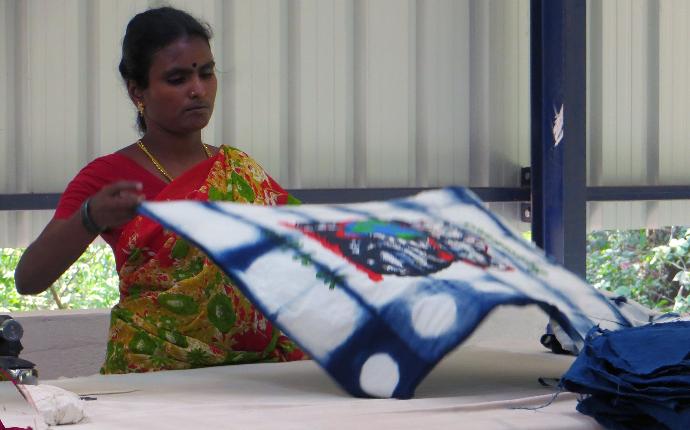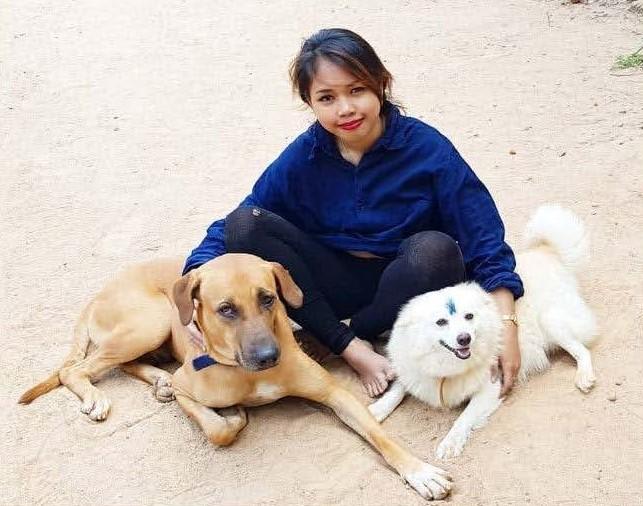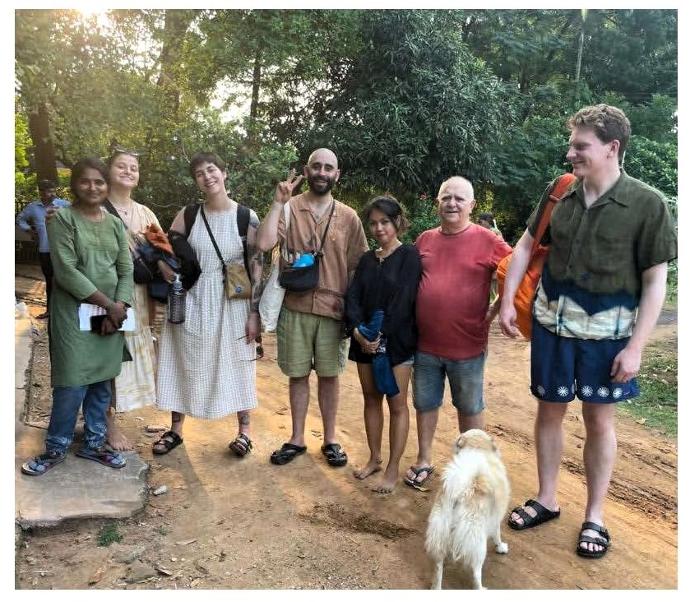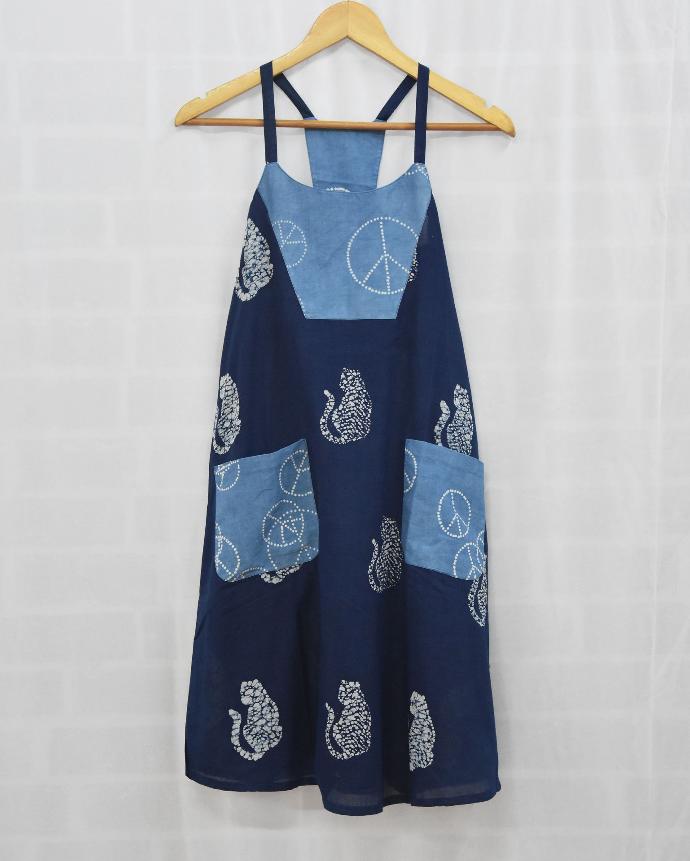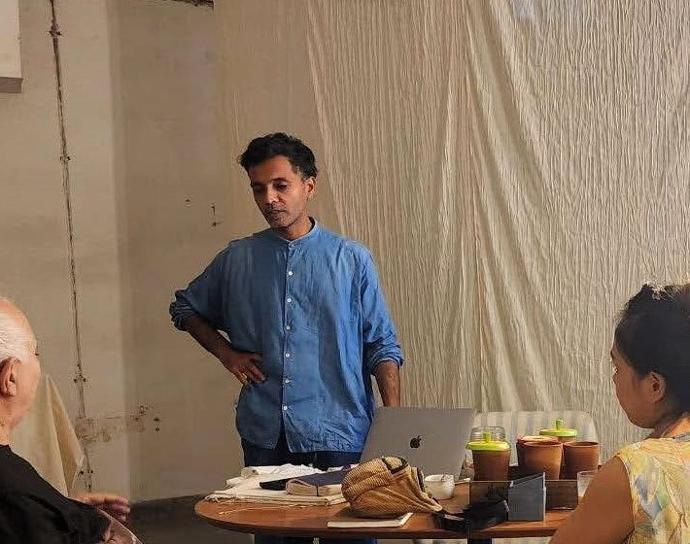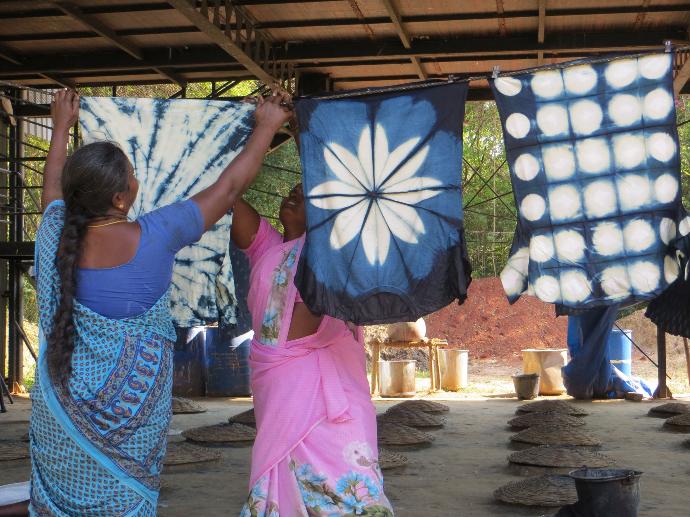30 YEARS & GOING STRONG
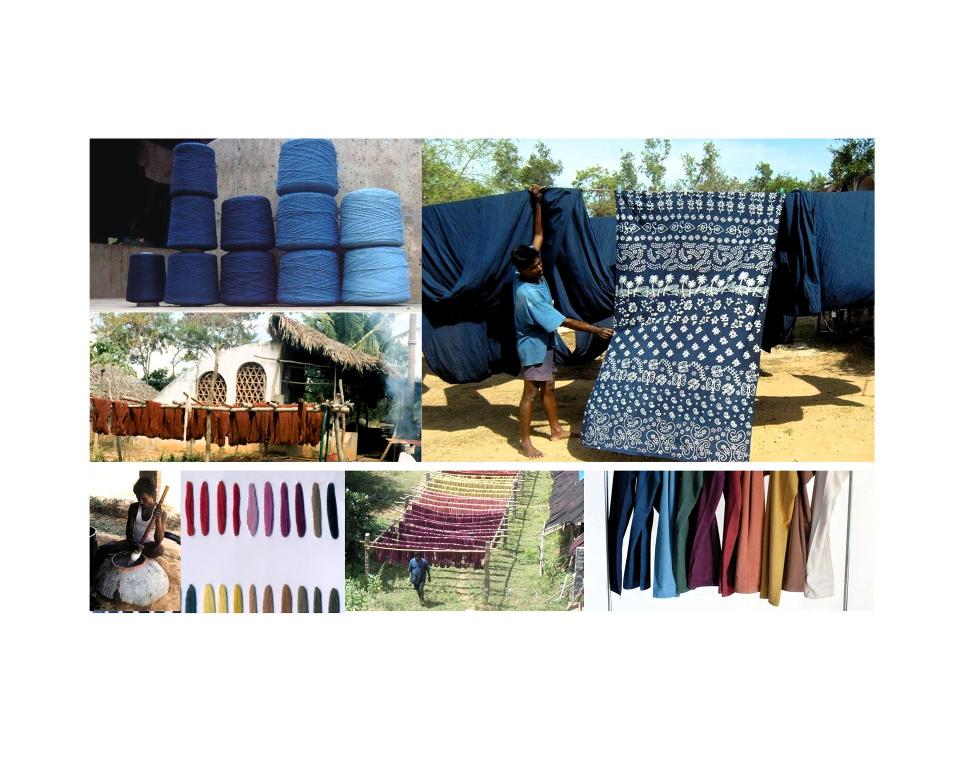
Natural Dyes
used to be mainstream.
During the 1850’s, in Bengal alone, 3500 tonnes of natural indigo were exported each year, with indigo cultivation and processing employing millions of people.
Synthetic Indigo
was launched in 1897, by BASF.
Before long synthetic indigo had replaced most of the natural indigo.
The Colours of Nature
was created in 1993 to help further the use of fully eco‐friendly dyes.
Textile Industry pollution
and contamination of river streams pose a risk to the environment and to human health.
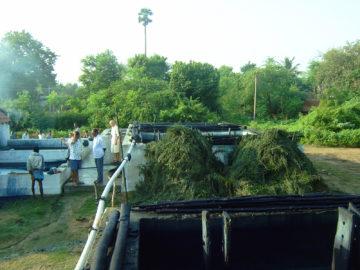
Reviving Natural Indigo Fermentation Dyeing
It started as an Auroville Research & Development unit in 1993, when Jesus finally found a village in Karnataka. Some families had kept the knowledge of the natural indigo fermentation process alive and a team arrived in Auroville.
They helped Jesus set up four 200 litre vats, spending three months to pass on the necessary routines. However, Jesus soon realized that the absence of smell meant synthetic indigo had crept into this lineage too. It took him a few more months to revive the fully natural indigo fermentation process, and to find a permanent site in Auroville. A unique, truly eco‐friendly natural dye unit had been born.
Key dyers and others have remained with The Colours of Nature since the unit’s humble beginnings. Natural indigo cakes are procured from a village which happens to be a world leader in natural indigo supply AND located at only a 60 km distance. They extract indigo from Indigofera tinctoria leaves.
We grind the cakes and add the powder to our vats, by now 62 vats with 1,000 litres of indigo dye solution capacity each.
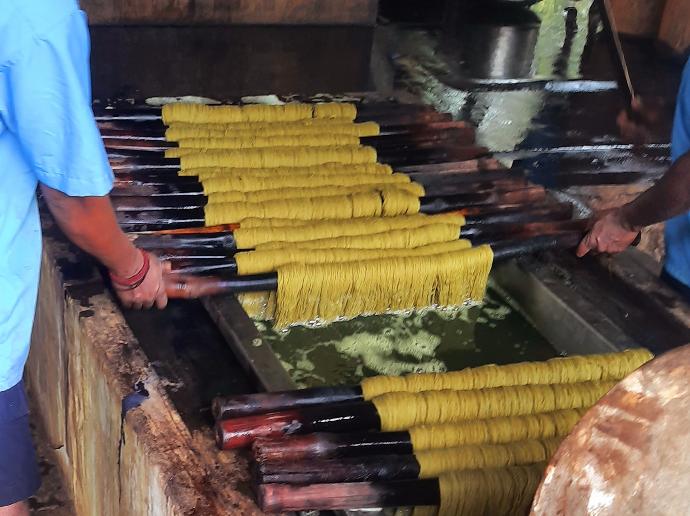
Mastering the palette
& expanding capacities
Key dyers and others have remained with The Colours of Nature since the unit’s humble beginnings.
Natural indigo cakes are procured from a village which happens to be a world leader in natural indigo supply AND located not too far away. They extract indigo from Indigofera tinctoria leaves, we grind the cakes and add the powder to our vats, by now 62 vats with 1,000 litres of indigo dye solution capacity each. The amount of material that we are able to dye per day depends on the depth of colour and the amount of work required for the particular fabric, plant and method. At times we are constrained by space and manpower limitations.
Specialised in natural indigo, we have mastered a full range of lightfast colours including yellow (e.g. Marigold flower) and red (Rubia cordifolia & others). Traditional Indian dyers used myrobalan, alum, wood ash and dye extracts and we build on this knowledge. We don’t use chromium or synthetic alizarin. For indigo, we don’t use hydrosulphite, a hazardous pollutant.
We plan to expand to 100 kg daily capacity and dream of 1,000 kg, with mechanization.

Extending the family & managing seed-to-seam
With the growing expertise exhibited by The Colours of Nature and Jesus, travelling to some far corners of the world to gather more knowledge and to share it, the unit has grown too.
By now, with many brands so good we are humbled, more than 100 people work at The Colours of Nature creating; be it by dyeing, cutting, stitching or embroidering. Or doing the shop assisting or office overheads work. Jesus remains very hands on in dyeing, continuously exploring to improve, and his wife Joana is a key member of the production team. And then there are dogs and kids, and when the customers visit - one big family, just the way it should be.
We still dream, though, of cultivating indigo on Auroville lands and to extract the dyes ourselves. The dye-yielding plant not only has the potential to revive barren lands and could provide much needed income to rural women gatherers, it also yields compost.
Another dream is to develop a more hi-tech non-indigo dyeing station as well as a demonstration site so that all who are curious can visit and learn.
